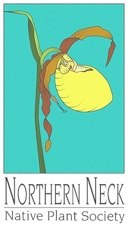Did you know we have a wonderful native Wild Strawberry, also known as Scarlet or Virginia Strawberry? It is an adaptable low, herbaceous perennial that spreads by runners to form handsome, ground-covering semi-evergreen colonies.
Read MoreWith the arrival of spring this month, I always look forward to finding one of my favorite early wildflowers, Virginia Pennywort. This herbaceous perennial is a diminutive spring ephemeral that emerges as early as February in the Coastal Plain but is often hidden in the leaf litter and visible only to those with the sharpest eyes.
Read MoreRed Maples, also called Swamp or Scarlet Maples, are known for their brilliant fall color. Now they may seem to be a surprising choice for the February Plant of the Month, but they are a true harbinger of spring, blooming in late winter often as early as February in Coastal Virginia.
Read MoreOne of my favorite plants during winter walks in the woods is the Common Running-cedar. This lovely but distinctive evergreen plant is common across Virginia in moist to dry acidic forests, especially in disturbed or successional forests with mixed pines, oaks or tulip poplars.
Read MoreInkberry or Gallberry is a great choice for the December Plant of the Month. This handsome broadleaf evergreen shrub typically grows slowly to about 5 – 8’ high and wide and has plenty of winter interest with its small narrowly ovate to lance-like dark green leaves that sparkle in the winter sun.
Read MoreWinged Sumac is a beautiful large deciduous shrub that shines throughout the year but is especially vibrant when it ignites into a fiery crescendo in fall. Typically growing from 7 – 15’ tall, this sumac often spreads into large colonies by root suckers.
Read MoreThe October Plant of the Month, Sourwood or Lily-of-the-Valley Tree, is spectacular in every season but especially so each fall as the foliage ignites into brilliant crimson or reddish-purple. Sourwood is one of our earliest, most vivid, and most reliable fall coloring trees, especially in the South.
Read MoreSweet or Anise-scented Goldenrod is one of the earliest fall blooming Goldenrods to grace our open areas including open woods, fields, powerline cuts and roadsides each fall.
Read MoreCommon Cut-leaf Coneflower is a tall statuesque late summer-fall bloomer found throughout Virginia and stands above most perennials at heights 5 to 9 feet. Also known as Green-headed, Tall Coneflower, or Wild Golden Glow, it is widely distributed in open floodplain forests, alluvial swamps, seepage swamps, wet meadows, and along streams and rivers and even roadsides.
Read MoreThe July Plant of the Month, Common Milkweed, is a lovely, robust, herbaceous perennial festooned with showy clusters of flowers from June to August. A member of the Milkweed genus, Asclepias, it often gets a bad rap for its rhizomatous roots that can spread aggressively; however, this species offers many attractive benefits.
Read MoreSoutheastern Prickly-pear Cactus, is certainly eye-catching when in bloom in late May and June and curious and just plain cool at any time of year. This native evergreen is technically a “shrub” although it grows only 6 – 12” high.
Read MoreEvery spring I look forward to seeing the lovely lavender-blue spires of Sundial Lupine rising above distinctive pinwheel foliage along sandy roadsides and open woods. Also known as Wild Lupine, this member of the Legume Family is found throughout the Eastern and Central United States.
Read MoreA few weeks ago, driving north from Florida, we passed mile after mile of waves of lavender-blue flowers gracing the highway shoulders in South Carolina. We were thrilled to see Lyre-leaf Sage, Salvia lyrata, creating a gorgeous spectacle along an otherwise barren straight stretch of road.
Read MoreTrailing Arbutus is one of our earliest blooming wildflowers and has been considered a “herald of spring” with its extremely fragrant clusters of pink to white flowers blooming from late February to April in our area.
Read MoreOne of my favorite sights while walking in winter woodlands are the beautiful evergreen leaves of Downy Rattlesnake Plantain, Goodyera pubescens. This eye-catching beauty is one of our most common woodland orchids and instantly recognizable by its exquisitely etched leaves with an intricate network of fine white veins on either side of a broader white midvein.
Read MoreThe January Plant of the Month, Eastern Red Cedar, Juniperus virginiana, goes by many names such as Eastern Juniper, Red Cedar or even Pencil Juniper. This widespread handsome native tree is found from Nova Scotia and Ontario south to northern Florida and Texas and west across the Great Plains and is extremely cold and heat tolerant.
Read MoreAs I write this in early December, most of the fall leaves have fallen from our deciduous trees and their architecture and bark has taken center stage helping to brighten the landscape. Birch trees are known for their colorful bark and our River Birch, Betula nigra, is no exception with its exquisite pale pink to salmon exfoliating bark making it one of our most stunning and picturesque trees.
Read MoreSassafras, Sassafras albidum, is one of our most distinctive and colorful native deciduous trees. Its brilliance is especially vibrant in fall when its leaves ignite into a glorious kaleidoscope of reds, golds, oranges and even purples. Even in summer, the blue-green leaves of Sassafras are distinctive with three different leaf shapes on a single tree.
Read More
